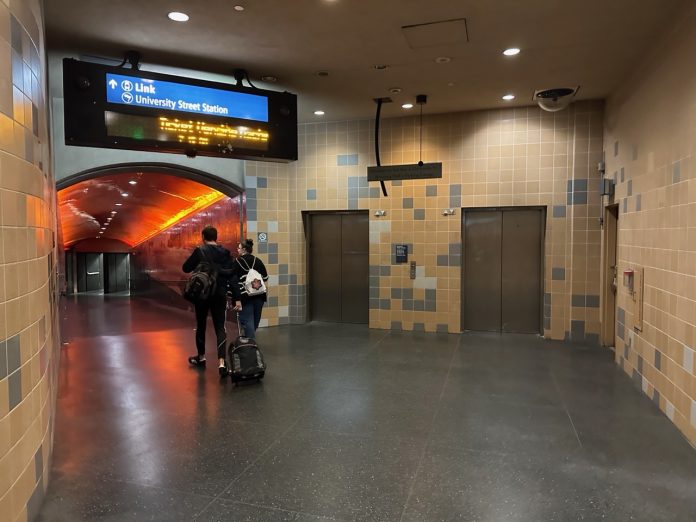
For more than a year, an elevator bank at University Street station has mostly been shuttered. The reason isn’t because of broken or faulty equipment like neighboring elevators have experienced, but an ongoing dispute between Benaroya Hall and Sound Transit.
University Street station’s Exit A2 is unique among Seattle’s downtown transit tunnel stations. It leads from the station’s north mezzanine level to street level via the interior of Benaroya Hall’s Boeing Company Gallery, which mostly faces 3rd Avenue but also flanks a portion of University Street. Two elevators transport riders between the floors, but the elevator bank has mostly been closed to public use since at least summer 2022, according to Sound Transit. Benaroya Hall officials have suggested the closure to have been even longer.
“The elevator closed in conjunction with the gallery closing at the start of the pandemic, which also caused closing off access from the gallery to the parking garage for security purposes,” Benaroya Hall officials told The Urbanist.
Around concert times when the gallery is open to the public, the elevators are being put into general service, so it seems transit riders could use them during those periods. Concert times usually are in the mid-evening sporadically throughout the week, though on weekends there can be concerts around afternoon matinée times.
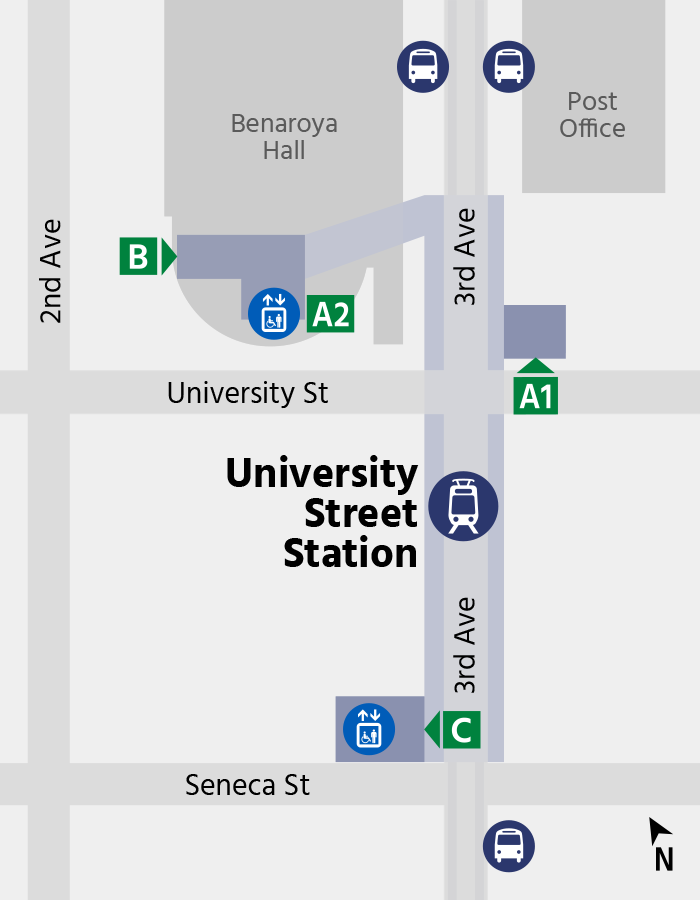
A service alert for the elevator closure hasn’t appeared on Sound Transit’s website, including on University Street station’s information page, in mobile apps, or in the station concourse. That’s problematic because the station also has a long-term outage for the elevator between the southern station mezzanine and street level at Seneca Street.
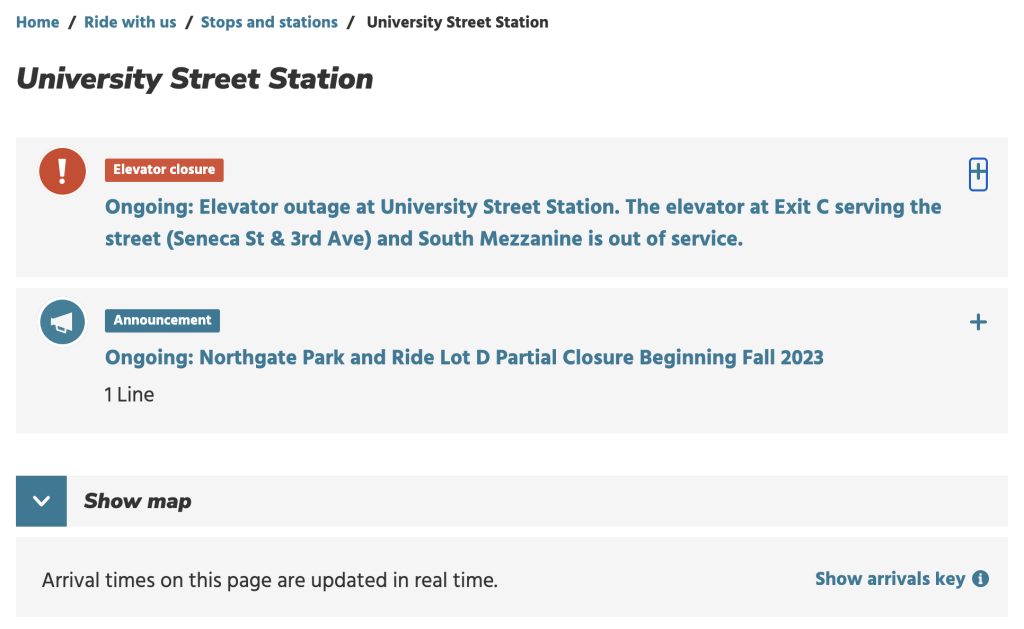
After East Link opens, University Street station is set to be renamed Symphony station to avoid confusion with University of Washington and U District stations. However, Symphony station may also be a misnomer given the frequent elevator closure.
Disabled riders wanting to access 3rd Avenue from the station are faced with the unfortunate reality that the station is fairly inaccessible. Signage from Benaroya Hall does point riders to a concourse entrance to the north mezzanine from 2nd Avenue, but the grade difference between 3rd Avenue and 2nd Avenue is steep along University Street — steeper than advised for ADA facilities. Riders could make a large circle around the block to reach 3rd Avenue or vice versa, but it’s not the obvious choice to backtrack and makes the option unappealing for disabled riders and others seeking to avoid a steep grade.
While the Boeing Company Gallery does still have some retail tenants, they are only open around concert times. Prior to the pandemic, the gallery did have retail that catered to transit riders and passersby during weekdays, not just concertgoers. That meant the gallery was open during a much wider set of hours.
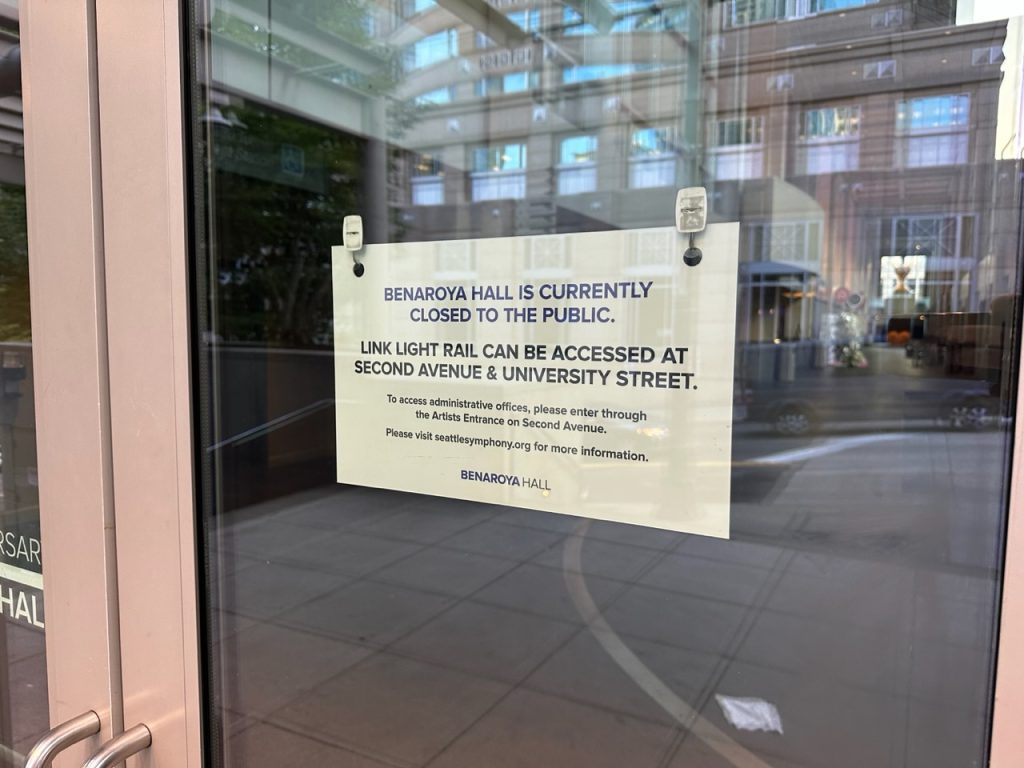
Last year, Sound Transit finally took ownership of the downtown transit tunnel from King County. The handover process was seriously delayed by the county, which stopped using the tunnel for bus operations in early 2019. The terms of the downtown transit tunnel appear to remain the same though, according to a recorded agreement between the county, City of Seattle, and Benaroya Hall.
Easement terms pass to any successor of King County, which in this case is Sound Transit. Terms of the easement stipulate various responsibilities between the parties over access from the north mezzanine to public streets. Among those are access through the Boeing Company Gallery.
“Although the Boeing Company Gallery is not included within the surface easement, the City and [Benaroya Hall] agree that all persons may gain ingress to or egress from the elevator portion of the surface easement via the Boeing Company Gallery when the Boeing Company Gallery is open to the public,” the easement reads.
The latter part of the provision appears to be partially at issue and why Benaroya Hall is not required to provide access to the elevators during all hours of transit service through Benaroya Hall. That gives Benaroya Hall leverage over use of the Boeing Company Gallery space outside of concert times.
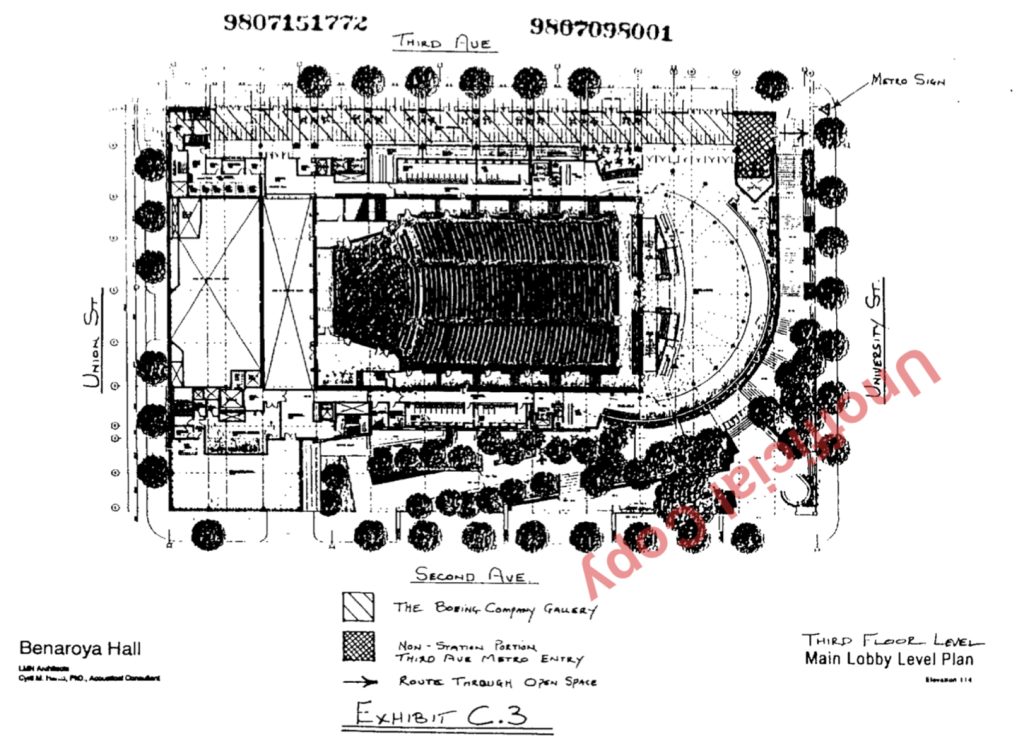
However, the “Surface Easement” provisions do require that the concourse from 2nd Avenue to the north mezzanine be open during all hours of downtown transit tunnel service operations and requires the same for the elevators themselves and a small quadrant of space at street-level next to the corner of 3rd Avenue and University Street — what the easement language calls the “Non-Station Portion” of Benaroya Hall.
Specifically, the easement definition states: “‘Non-Station Portion’ means…(ii) that portion of the Entry from the grille gate situated at the northeast corner of the southeast elevator bank lobby located on the Second Avenue Concourse, vertically, by way of the dual elevator banks and associated stairs to The Boeing Company Gallery, south to the University Street doors at the southeast corner of the City’s Property, as shown on Exhibit C.”
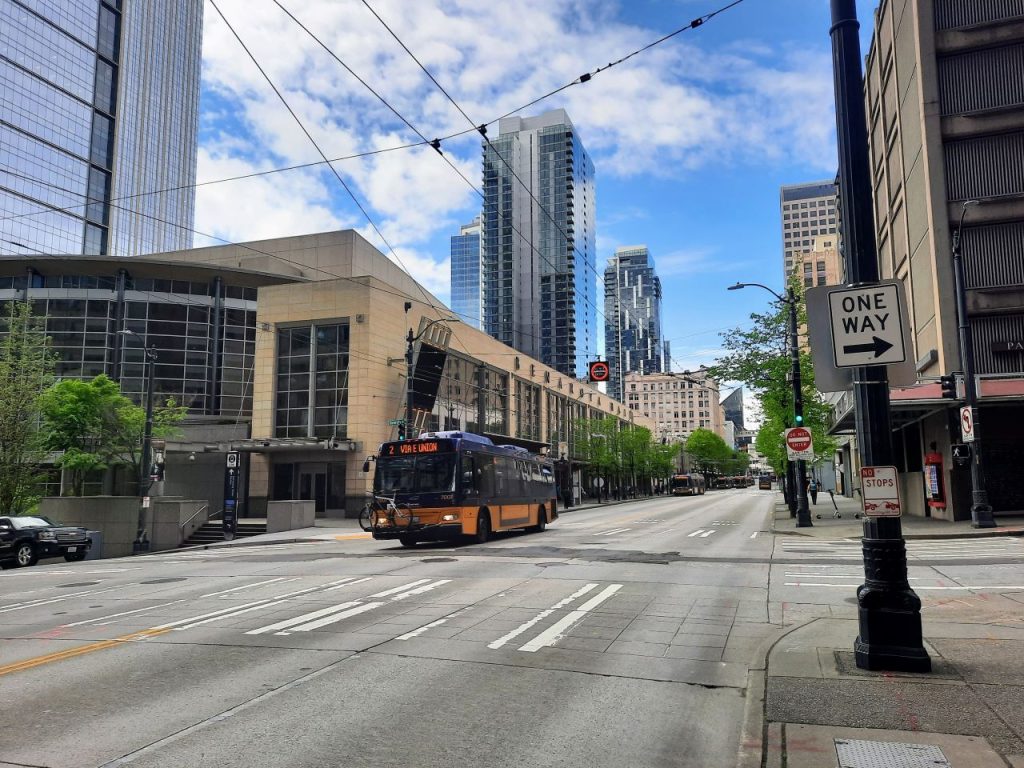
Earlier this year, the City of Seattle completed a lease agreement amendment with Benaroya Hall that modified payment terms for use of the city-owned facility, which also received $41 million in City funds to help fund its construction in the 1990s. Approval of the amendment didn’t address the elevator access issue, but there may be some future resolution to it.
“Benaroya Hall and the Seattle Symphony are working closely with Sound Transit on this issue,” Benaroya Hall officials told The Urbanist. “Though Benaroya Hall and the Seattle Symphony cannot speak to specifics on what would be needed for Sound Transit, we can say that we are all eager to reopen the space to the public.”
Those officials also said that Benaroya Hall is “looking forward to reopening the Boeing Company Gallery for public use” and to “stay tuned for a larger announcement on the re-opening of the gallery.”
Correction: This article was corrected regarding details of the elevator access easement on January 27, 2024. The easement provides Sound Transit more rights than initially stated.
Stephen is a professional urban planner in Puget Sound with a passion for sustainable, livable, and diverse cities. He is especially interested in how policies, regulations, and programs can promote positive outcomes for communities. With stints in great cities like Bellingham and Cork, Stephen currently lives in Seattle. He primarily covers land use and transportation issues and has been with The Urbanist since 2014.


